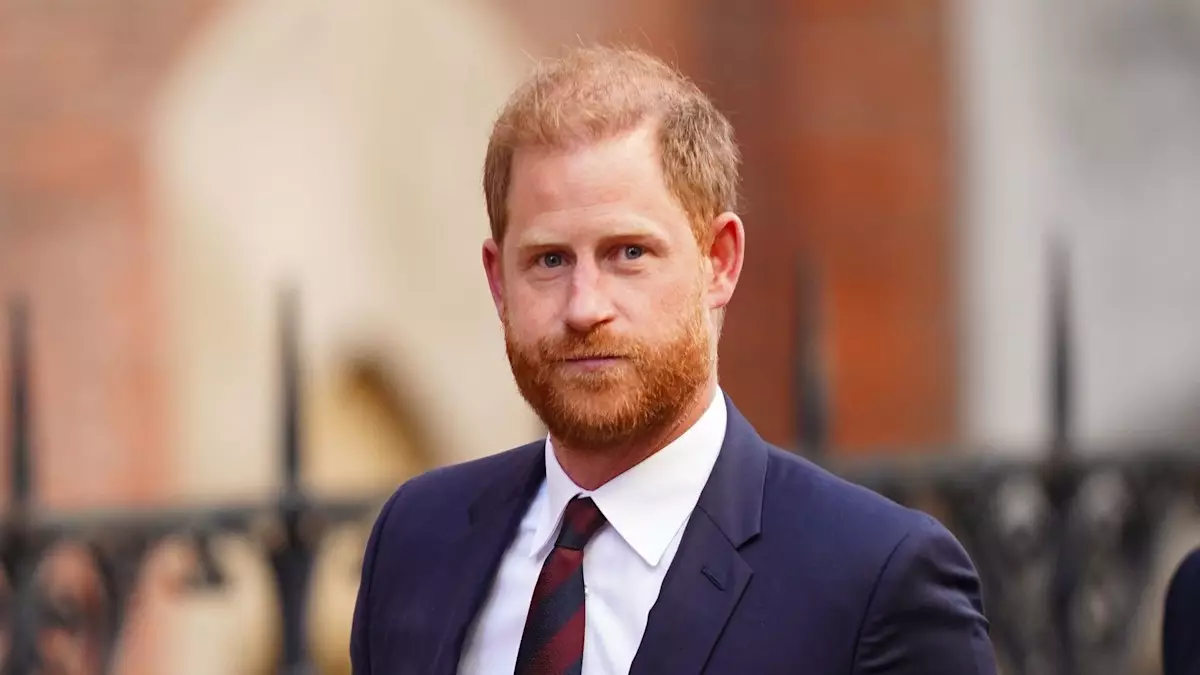Prince Harry, the Duke of Sussex, finds himself at the heart of a contentious legal struggle with the British Home Office, emphasizing the precarious nature of royal safety amid personal grievances. His recent statements reveal what he describes as the confirmation of his “worst fears” regarding the revocation of his police protection since stepping back from royal duties in 2020. The court hearings, which decided the fate of this critical matter, were not merely about security; they mirrored deeper conflicts around identity, autonomy, and the responsibilities that come with his royal status.
Through his grueling legal battles, Harry has articulated feelings of exhaustion and overwhelm, which are understandable given the complexities of navigating not only the legal system but also public perception. His presence at the Royal Courts of Justice is a testament to his commitment to securing a sense of safety for himself and his family, particularly when in the UK. At a time where personal security can feel compromised due to external pressures, Harry’s pursuit of legal recourse is as much about self-preservation as it is about addressing systemic issues of security for royals who opt to redefine their roles within the monarchy.
The Hidden Narratives of Protection
The request for judicial review challenges a decision made by the Executive Committee for the Protection of Royalty and Public Figures (Ravec), which dictated that Harry would not receive the same level of police protection as he did while serving as a senior royal. Instead, he was offered a tailored security package that requires advance notice of visits to the UK and an evaluation of potential threats each time he arrives. This decision, announced in February 2020, has been scrutinized not only for its practical implications but for how it potentially reflects broader issues regarding the monarchy’s evolving relationship with its members.
Harry’s assertion that “people would be shocked” by the private evidence presented during the hearings indicates that there are deeper, possibly troubling aspects of the case that remain obscured from the public eye. This dramatic unveiling hints at inefficiencies in the system, suggesting a disconnect between royal obligations and the safety concerns faced by a member of the royal family who chooses a different path. It’s this paradox of privilege and vulnerability that underpins the existing royal framework and raises critical questions about the extent to which the monarchy can adapt to modern realities.
Public Reaction and Palace Denials
The situation has ignited a variety of opinions, particularly in light of Buckingham Palace’s steadfast denials of any allegations suggesting that the security decision was intentionally punitive towards Harry and Meghan. The Palace’s silence amidst these accusations creates a complex atmosphere of distrust, where personal grievances are intertwined with institutional responses. This dichotomy serves not only to illustrate Harry’s unique challenges but also the broader implications of how royals transition from their roles, often experiencing pushback from the very institution they once served.
As the Duke’s appeal unfolds, it’s essential to recognize that at the core of these proceedings is a human being whose safety is on the line. As legal representative Shaheed Fatima KC poignantly stated, “There is a person sitting behind me whose safety, whose security, and whose life is at stake.” This assertion draws attention to the importance of considering the emotional and psychological dimensions of legal battles that extend beyond the courtroom. In this way, Harry’s struggle transcends personal grievances, reflecting a broader narrative of how public figures must navigate the limitations imposed by institutional prerogatives.
The Unfolding Drama and Judicial Landscape
As the Duke’s legal team prepares for what comes next, the Home Office continues its defense, arguing that the legal challenge overlooks the broader context of security decisions being evaluated on an individual basis. The legal and moral compass guiding the outcomes of such cases remain contentious, with both sides entrenched in their views on security, rights, and responsibilities. The courtroom settings have become arenas for a larger societal discourse about privilege, protection, and the capacity of institutions to evolve with the needs of modern life.
The anticipation surrounding the court’s written decision, expected in the future, casts a long shadow over these proceedings. Whether it will uphold the previous rulings or pave the way for a different narrative remains to be seen. At the heart of it all is a profound inquiry into what safety means in a world where the lines between personal choice and public duty are increasingly blurred. The stance taken by the court will resonate well beyond the walls of the Royal Courts of Justice, potentially influencing how royal safety is interpreted in the years to come.

